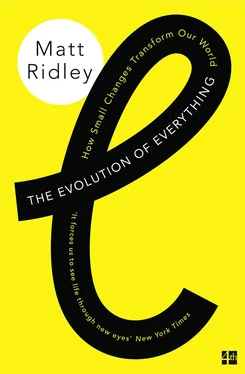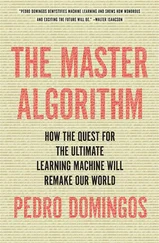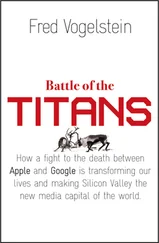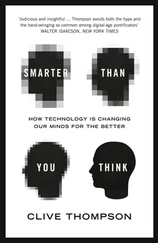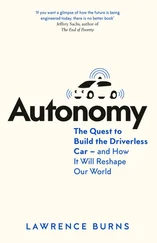Am I heading for a Lucretian swerve? Will I be forced to concede that the combinatorial vastness of the library of possible proteins makes it impossible for evolution to find ones that work? Far from it. We know that human innovation rarely designs things from scratch, but jumps from one technology to the ‘adjacent possible’ technology, recombining existing features. So it is taking small, incremental steps. And we know that the same is true of natural selection. So the mathematics is misleading. In a commonly used analogy, you are not assembling a Boeing 747 with a whirlwind in a scrapyard, you are adding one last rivet to an existing design. And here there has been a remarkable recent discovery that makes natural selection’s task much easier.
In a laboratory in Zürich a few years ago, Andreas Wagner asked his student João Rodriguez to use a gigantic assembly of computers to work his way through a map of different metabolic networks to see how far he could get by changing just one step at a time. He chose the glucose system in a common gut bacterium, and his task was to change one link in the whole metabolic chain in such a way that it still worked – that the creature could still make sixty or so bodily ingredients from this one sugar. How far could he get? In species other than the gut bacterium there are thousands of different glucose pathways. How many of them are just a single step different from each other? Rodriguez found he got 80 per cent of the way through a library of a thousand different metabolic pathways at his first attempt, never having to change more than one step at a time and never producing a metabolic pathway that did not work. ‘When João showed me the answer, my first reaction was disbelief,’ wrote Wagner. ‘Worried that this might be a fluke, I asked João for many more random walks, a thousand more, each preserving metabolic meaning, each leading as far as possible, each leaving in a different direction.’ Same result.
Wagner and Rodriguez had stumbled upon a massive redundancy built into the biochemistry of bacteria – and people. Using the metaphor of a ‘Library of Mendel’, in which imaginary building are stored the unimaginably vast number of all possible genetic sequences, Wagner identified a surprising pattern. ‘The metabolic library is packed to its rafters with books that tell the same story in different ways,’ he writes. ‘Myriad metabolic texts with the same meaning raise the odds of finding any one of them – myriad-fold. Even better, evolution does not just explore the metabolic library like a single casual browser. It crowdsources, employing huge populations of organisms that scour the library for new texts.’ Organisms are crowds of readers going through the Library of Mendel to find texts that make sense.
Wagner points out that biological innovation must be both conservative and progressive, because as it redesigns the body, it cannot ever produce a non-functional organism. Turning microbes into mammals over millions of years is a bit like flying the Atlantic while rebuilding the plane to a new design. The globin molecule, for example, has roughly the same three-dimensional shape and roughly the same function in plants and insects, but the sequences of amino acids in the two are 90 per cent different.
Yet, despite this overwhelming evidence of emergence, the yearning for design still lures millions of people back into doubting Darwin. The American ‘intelligent design’ movement evolved directly from a fundamentalist drive to promote religion within schools, coupled with a devious ‘end run’ to circumvent the USA’s constitutional separation between Church and state. It has largely focused upon the argument from design in order to try to establish that the complex functional arrangements of biology cannot be explained except by God. As Judge John Jones of Pennsylvania wrote in his judgement in the pivotal case of Kitzmiller vs Dover Area School District in 2005, although proponents of intelligent design ‘occasionally suggest that the designer could be a space alien or a time-traveling cell biologist, no serious alternative to God as the designer has been proposed’. Tammy Kitzmiller was one of several Dover parents who objected to her child being taught ‘intelligent design’ on a par with Darwinism. The parents went to court, and got the school district’s law overturned.
In the United States, fundamentalist Christians have challenged Darwinism in schools for more than 150 years. They pushed state legislatures into adopting laws that prohibited state schools from teaching evolution, a trend that culminated in the Scopes ‘monkey trial’ of 1925. The defendant, John Scopes, deliberately taught evolution illegally to bring attention to the state of Tennessee’s anti-evolution law. Prosecuted by William Jennings Bryan and defended by Clarence Darrow, Scopes was found guilty and fined a paltry $100, and even that was overturned on a technicality at appeal. There is a widespread legend that Bryan’s victory was pyrrhic, because it made him look ridiculous and Scopes’s punishment was light. But this is a comforting myth told by saltwater liberals living on the coasts. In the American heartland, Scopes’s conviction emboldened the critics of Darwin greatly. Far from being ridiculed into silence, the fundamentalists gained ground in the aftermath of the Scopes trial, and held that ground for decades within the educational system. Textbooks became very cautious about Darwinism.
It was not until 1968 that the United States Supreme Court struck down all laws preventing the teaching of evolution in schools. Fundamentalists then fell back on teaching ‘creation science’, a concoction of arguments that purported to find scientific evidence for biblical events such as Noah’s flood. In 1987 the Supreme Court effectively proscribed the teaching of creationism on the grounds that it was religion, not science.
It was then that the movement reinvented itself as ‘intelligent design’, focusing on the old Aquinas–Paley argument from design in its simplest form. Creationists promptly rewrote their textbook Of Pandas and People , using an identical definition for intelligent design as had been used for creation science; and systematically replaced the words ‘creationism’ and ‘creationist’ with ‘intelligent design’ in 150 places. This went wrong in one case, resulting in a strange spelling mistake in the book, ‘cdesign proponentsists’, which came to be called the ‘missing link’ between the two movements. This ‘astonishing’ similarity between the two schools of thought was crucial in causing Judge John Jones to deem intelligent design religious rather than scientific as he struck down the Dover School District’s law demanding equal time for intelligent design and evolution in 2005. Intelligent design, according to the textbook Of Pandas and People , argued that species came into existence abruptly, and through an intelligent agency, with their distinctive features already present: fish with fins and scales, birds with feathers.
Jones’s long Opinion in 2005 was a definitive and conclusive demolition of a skyhook, all the more persuasive since it came from a Christian, Bush-appointed, politically conservative judge with no scientific training. Jones pointed out that the scientific revolution had rejected unnatural causes to explain natural phenomena, rejected appeal to authority, and rejected revelation, in favour of empirical evidence. He systematically took apart the evidence presented by Professor Michael Behe, the main scientific champion of intelligent design testifying for the defendants. Behe, in his book Darwin’s Black Box and subsequent papers, had used two main arguments for the existence of an intelligent designer: irreducible complexity and the purposeful arrangement of parts. The flagellum of a bacterium, he argued, is driven by a molecular rotary motor of great complexity. Remove any part of that system and it will not work. The blood-clotting system of mammals likewise consists of a cascade of evolutionary events, none of which makes sense without the others. And the immune system was not only inexplicably complex, but a natural explanation was impossible.
Читать дальше
